
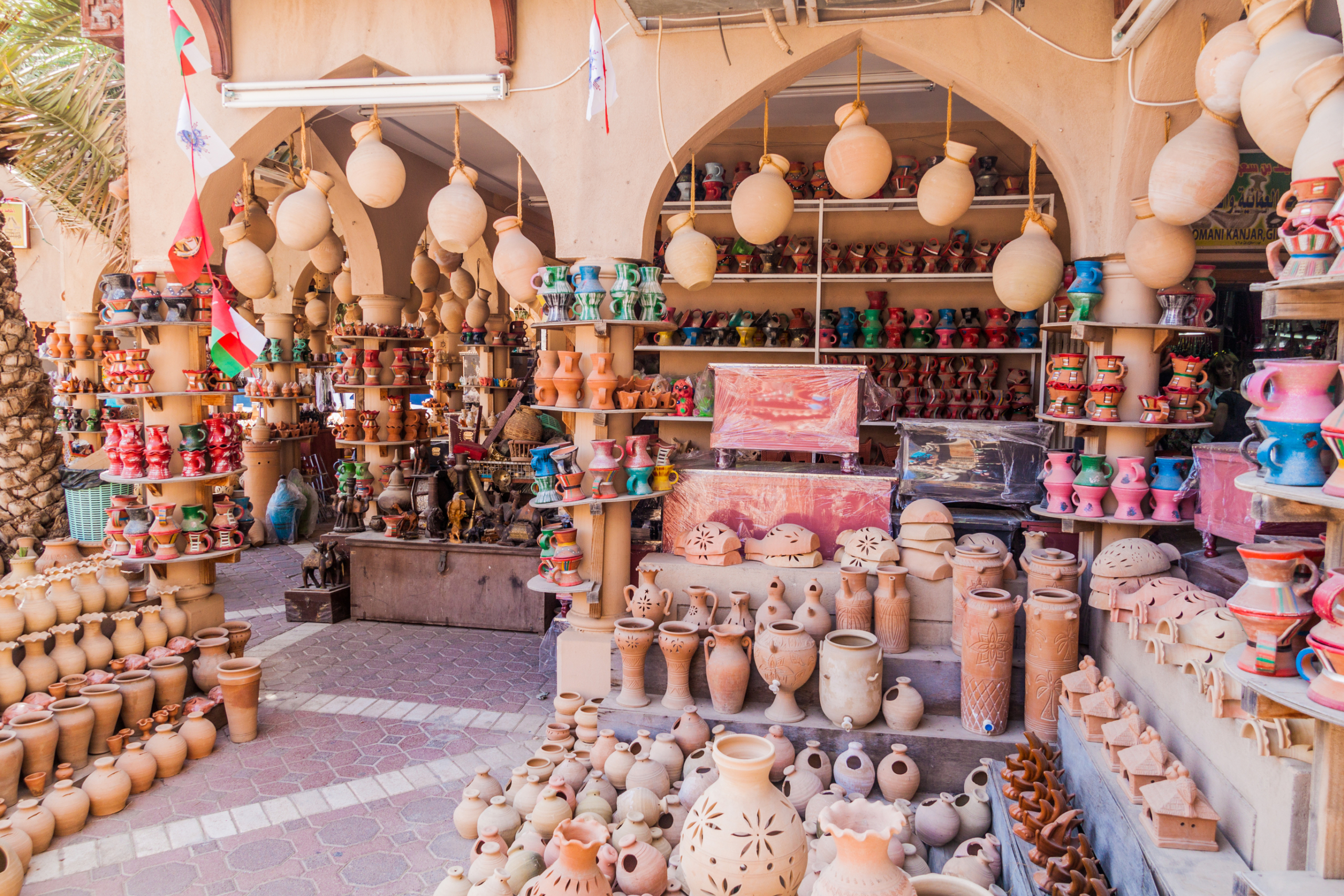
Discover the Hidden Gems of Nizwa Souq: A Shopper’s Paradise
My visit to ancient Oman led me to a marketplace that has engaged traders and travelers for over 1000 years. The Nizwa Souq stands as one of the oldest and most fascinating markets in the Arab world. Each corner here tells a story of tradition and commerce.
We’ve really explored the historic Nizwa Souq to share an insider’s guide to its treasures with you. This traditional bazaar gives visitors an authentic shopping experience that’s hard to find in our modern world. You’ll find everything from aromatic spice stalls and intricate silver works to the bustling Friday cattle market.
Our complete guide will show you the best times to visit and the essential shopping areas. You’ll learn about must-buy traditional items and our tried-and-tested shopping tips. We’ve also included some hidden specialty shops that most visitors tend to miss.
Best Times to Visit Nizwa Souq
My multiple visits to Nizwa Souq taught me that timing matters a lot to learn about this historic marketplace. These carefully researched tips should help you pick the best times to experience this cultural gem.
Early morning shopping experience
The early morning hours give you the most authentic shopping experience at Nizwa Souq. The market runs in two main sessions:
- Morning session: 5:00 AM – 1:00 PM
- Evening session: 4:00 PM – 10:00 PM
You should aim to reach around 6:00 AM as the market comes alive. The morning air feels crisp, and you’ll see the freshest produce and most energetic traders. Local shoppers tend to prefer these early hours, which makes it ideal to experience the authentic atmosphere.
Famous Friday market emphasis
Friday morning market stands as the crown jewel of Nizwa Souq’s weekly calendar. Getting there by 7:00 AM lets you see the famous livestock auction at its peak. The atmosphere buzzes with excitement as traders gather in the circular auction area to show their goats, cattle, and sheep.
This experience feels special because of its traditional feel – Bedouin-dressed traders and local families take part in age-old trading customs. The livestock market usually ends at 9:00 AM, but an early arrival helps you get a good spot to watch the preparations.
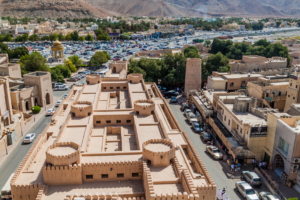
Evening shopping atmosphere
Nizwa Souq changes into a different kind of shopping paradise as night falls. The evening session brings relief from the day’s heat and creates a more relaxed shopping environment. The aroma of freshly brewed coffee and date treats fills the air, which makes evening visits more enjoyable.
The evening atmosphere feels magical. The souq becomes a social hub where locals and tourists browse through detailed stall arrangements. Artisans seem more relaxed then and love to talk about their crafts and traditions.
Essential Shopping Areas Guide
The fascinating layout of Nizwa Souq has captivated me during my countless hours of learning about its distinct zones. You can easily move around the market thanks to its thoughtful organization that preserves its historic charm.
Traditional craft section layout
The bustling craft section sits at the souq’s heart. It showcases Oman’s finest artisanal works. This area springs to life with the glitter of silver crafts, which has made Nizwa famous throughout Oman. My visits let me watch skilled artisans create exquisite pieces, including:
- Traditional khanjars (curved daggers)
- Intricately designed silver jewelry
- Hand-woven textiles
- Beautifully crafted pottery
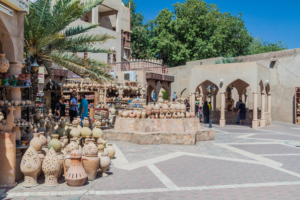
Fresh produce and dates market
The modern produce section impressed me with its pristine white settings and well-planned layout. The unique shopping culture caught my eye – male shoppers select fresh produce, though women typically do the cooking at home. The dates section grabbed my attention, where I learned about more than 30 different varieties. Each variety has its distinct flavor profile.
Antiques and collectibles zone
The antiques section became my favorite find. It sits within what appears to be the fort’s original walls. Traditional wooden ceilings cast intricate shadows over corridors filled with treasures. Old coffers with detailed decorations captured my imagination. Each piece tells its own story of Omani heritage.
The East Souq keeps its unrestored charm and offers the most authentic experience. Weathered arches and time-worn walls surround an enchanting mix of spices, nuts, and household goods. This area might look less organized, but it holds some of the souq’s most interesting finds.
This market stands out because each section flows naturally into the next. The path leads from traditional crafts to fresh produce and finally to antiques. The Islamic architectural elements – arches, wooden doors, and shaded walkways – shield visitors from the sun and add to the market’s authentic atmosphere.
Must-Buy Traditional Items
My shopping adventures at Nizwa Souq have taught me about traditional items that you shouldn’t miss. Let me share some tips to help you pick authentic pieces from this historic marketplace.
Authentic Omani crafts and pottery
Beautiful terracotta pots at the market’s entrance sparked my love for Nizwa’s pottery. The craftsmen here create exceptional pieces, especially the traditional ones with three distinctive rope-braid rings. These rings served a practical purpose – they reinforced vessels that stored heavy date syrup. The water urns showcase intricate designs and the incense burners feature delicate patterns. Each piece tells a unique story of Omani heritage.
Local spices and dates selection
The spice section has become my favorite spot to explore authentic Omani flavors. The most aromatic saffron, cardamom, and cumin fill the air – these spices are the heart of traditional Omani cuisine. The date market amazed me with its variety. Here are some of the finest varieties I came across:
- Khalas – known for its exceptional taste
- Khunaizi – distinctively dark red and super sweet
- Fardh – featuring soft, dark brown skin
- Khasab – prized for its deep red color
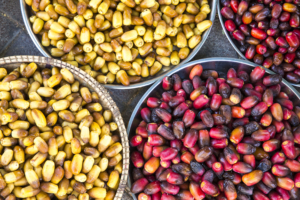
Silver khanjars and jewelry
Nizwa’s silver craft heritage runs deep – this city was once Oman’s leading center for silver jewelry making. Gold might be popular now, but the traditional silver pieces remain spectacular. The khanjar (curved dagger) stands out as more than a weapon. It symbolizes national pride and appears on Oman’s flag and currency.
Authentic khanjars combine curved steel blades with ornate silver sheaths. The silver jewelry section reveals unique treasures – bracelets, necklaces, and traditional women’s ornaments that once showed wealth and social status.
The sort of thing I love about Nizwa Souq is how each item connects to centuries of Omani tradition. These souvenirs are more than just purchases – they’re pieces of Oman’s rich cultural heritage that you can take home.
Smart Shopping Tips and Tricks
I’ve become skilled at shopping at Nizwa Souq after countless visits, and now I’m excited to share my tried-and-tested strategies that help you get the best deals while respecting local traditions.
Bargaining etiquette and customs
My first attempts at bargaining in Nizwa Souq taught me that it goes beyond negotiating prices – it’s an art form deeply rooted in Omani culture. Experience shows that smiling and maintaining a cheerful demeanor is a vital part of negotiations. I always greet vendors with a friendly “As-salamu alaykum” and often share a cup of traditional coffee they offer.
These bargaining tips have worked well for me:
- Start at approximately 50% of the original asking price
- Negotiate with patience and respect
- Show genuine interest in the craftsmanship
- Be prepared to walk away politely
- Note that items under one rial typically aren’t negotiable
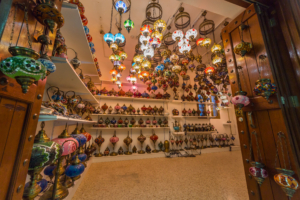
Price comparison strategies
My shopping adventures have led me to develop a foolproof system for getting the best deals. The first hour goes into walking through different sections of the souq to note prices for similar items. Prices can vary substantially, especially for silver items where authentic pieces range from OR50 to well over OR500.
I always ask about craftsmanship details when dissecting silver khanjars or jewelry. Pieces made by Indian or Pakistani silversmiths under Omani supervision often provide excellent value while maintaining high quality. The hidden section at the top of one of the produce markets has the finest selection of antiques and collectibles at competitive prices.
Local payment methods accepted
Nizwa Souq is modernizing, but cash is still the king. Some larger shops accept cards now, but I always carry cash. Better prices often come with cash payments, and many interesting small shops and artisan workshops only take cash.
Small denominations work better since vendors struggle to break large bills. Both Omani Rials and Dirhams are accepted here, with one rial equivalent to 10 dirhams. The ATMs at nearby malls serve as convenient spots to withdraw cash before heading to the souq.
Bargaining isn’t about winning – it’s about finding a fair price that values both the craftsman’s work and your budget. The best purchases come naturally when you build rapport with vendors and show genuine appreciation for their products.
Hidden Specialty Shops
I wandered beyond the main market corridors of Nizwa Souq and found a network of hidden workshops and specialty stores that most tourists never see. These tucked-away spots have become my favorite places to find authentic Omani craftsmanship.
Local artisan workshops
My best find was a traditional silver crafting workshop, where I watched skilled artisans turn raw silver into intricate jewelry and khanjars. The rhythmic sound of hammering metal and the precise movements of craftsmen working with centuries-old techniques fascinated me for hours. These workshops let you see the detailed process of silver etching, shaping, and engraving up close.
The textile section had me spellbound as weavers created vibrant fabrics on traditional looms. These craftspeople keep alive techniques passed down through generations. They welcome visitors to watch their work, and I’ve spent many afternoons seeing intricate patterns shape thread by thread.
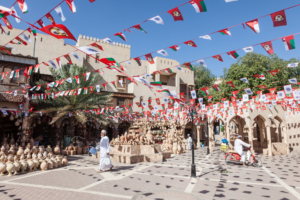
Lesser-known craft stores
متجر حرف (Matjr Hrf) stands out as one of my favorite hidden gems. This art supply store has grown into a bustling creative hub. Here’s what I found:
- Local and international art supplies
- Handmade items reflecting Omani heritage
- Regular workshops and community events
- Unique artist-made products
The Omani Craftsman’s House (formerly Omani Heritage Gallery) near the fort’s entrance has become my favorite spot to find high-quality handicrafts. Their collection of goat’s wool textiles beats anything in the main souq. Each purchase means more because it helps support local artisans through their social enterprise.
Unique souvenir spots
The New National Gift Market helps me find distinctive souvenirs. This rich source of handmade products tells stories of Omani craftsmanship, unlike the main market areas. The vendors share their passion about the cultural significance behind their creations.
These specialty shops stand out because they preserve traditional techniques. The souq’s upper levels house two remarkable boutiques – one features Moroccan crafts and another showcases Omani treasures. The right-side Omani shop caught my eye with its authentic carpets and wool textiles in beautiful earthy tones.
A small workshop where artisans craft traditional pendant lamps turned out to be my most magical find. They turned metal and glass into glowing works of art while sharing stories of their craft’s history. This gave me a deeper connection to Nizwa’s living heritage. These hidden workshops preserve ancient skills and help visitors connect with the heart of Omani craftsmanship.
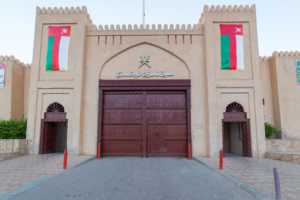
Conclusion
Nizwa Souq stands apart from modern shopping centers. My time exploring this ancient trading hub has shown me how it preserves centuries of Omani culture. The bustling corridors, skilled artisans, and traditional treasures tell stories of the past.
The market comes alive early in the morning, especially during its famous Friday livestock market. Each section is a chance to find something special – from authentic silver crafts to aromatic spices and handmade pottery. Small workshops and specialty stores tucked away in corners add genuine charm to this exceptional shopping experience.
Smart shopping makes all the difference here. You’ll get the best deals when you respect local traditions and follow my tips about timing and payments.
This marketplace serves as a living museum where traditional craftsmanship runs on. Every visit brings something new to discover. You might see master silversmiths crafting their work or find unique treasures in hidden corners. This historic bazaar continues to engage visitors just as it has done for over a millennium. Each shopping adventure here creates lasting memories.
